Willkommen: Hier finden Sie die deutsche Fassung des Briefes aus BerlinWelcome to the Letter from Berlin! Our focus is Andrew Grassie’s exhibition Still Frame with an essay introducing the Online Viewing Room and an online tour the artist and Manuel Miseur, director at the gallery, conducted. While Thomas Demand’s exhibition at M Leuven is currently closed, we want to draw your attention to the artist's conversation with the museum’s curator Valerie Verhack, Demand’s recent interview with German Public Radio, and the final cover for DOMUS as part of his collaboration with the magazine’s 2020 guest editor David Chipperfield. Recent press includes a comprehensive article on AA Bronson’s A Public Apology to Siksika Nation and an interview with Gabriel Kuri on life in Brussels. As most European museums are temporarily closed, we highlight several exhibitions opening in Taipei.
|
|
|
Andrew Grassie - Still Frame
|
|
 | Andrew Grassie, Windscreen, 2020, tempera on paper on board, 14,8 x 18,8 cm (image), 31,1 x 35,2 x 3 cm (framed)
Image © Andrew Grassie
| |
|
It’s ironic that stills are associated with film since, before the advent of digital technology, hardly anyone ever saw a single celluloid frame clearly. Films did not stand still. And if they did—in a famous movie trope—they burned. The stillness of an individual frame is conditional: as soon as the film speeds up, the single image disappears in the movement of time.
Video and digital media, as Laura Mulvey noted in 2006, have opened up new ways of seeing old movies. I remember being quite shocked at the radical implications of this common-sensical observation. It did not seem so long ago when I sat in the basement of a film studies department, operating an unyielding clunky VCR plus Monitor viewing machine, in order to study certain scenes. Back and forth it went, stopping relatively imprecisely, garbling the sound in the process. Yet this was already part of what Mulvey describes: Return and repetition necessarily involving interrupting the flow of film, delaying its progress, and, in the process, discovering the cinema’s complex relation to time.
|
|
|

| Chris Marker, La Jetée, 1962.
| |
|
For his exhibition Still Frame, Andrew Grassie departed from his previous practice of elaborately staging his source imagery—his paintings are almost always based on photographs, either his own, commissioned or found—and, as he puts it, allowed himself to paint images which had a hold on him for reasons he could not fully explain. As he continued an associative journey into his image archive, the project began to take on parallels to Chris Marker’s 1962 film La Jetée, manifesting themselves in ways surprising even to Grassie. The belatedness of understanding the importance of an image, a core theme of La Jetée, was enacted when Andrew realized retrospectively that some of the motifs in his exhibition could be found in Marker’s film as well.
|
|
|
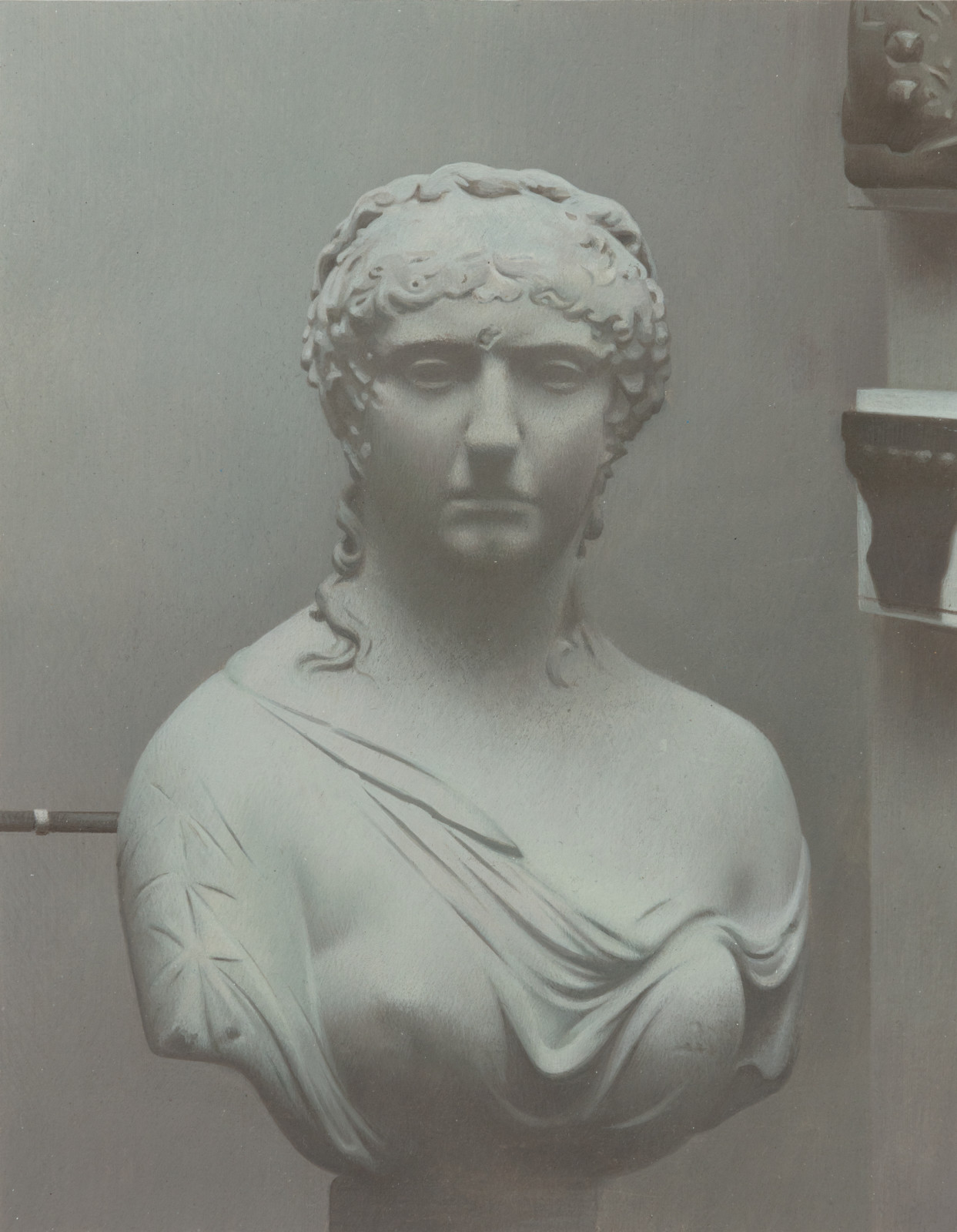 | Andrew Grassie, Sculpture 1, 2019, tempera on paper on board, 18,8 x 14,8 cm (image), 35,2 x 31,1 x 3 cm (framed)
Image © Andrew Grassie
| |
|
Another irony: Chris Marker’s groundbreaking photo-roman La Jetée, consisting almost exclusively of superimpositions, dissolves, cross-fades, or fades-to-black of photographic still images is shot on film. The rhythm of these effects creates an elegiac impression of elastic time. The enduring power of this photo-roman is hard to overestimate. It leaves you with a sense of having lived through this story of war, love, and time-travel alongside its unnamed protagonist. As if we too could escape to the past and remember the future.
Now imagine millions of computer screens featuring screen savers with such effects by default.
Accordingly, Andrew Grassie’s recourse to personally significant images is also in response to contemporary image worlds communicated via social media. His paintings of snapshots seem to ask whether the unique power of certain natural phenomena—the idea of the sublime—can hold up, say, to the millions of sunsets posted each day.
|
|
|
 | Andrew Grassie, Bridge 1, 2020, Tempera on paper on board, 14,8 x 18,8 cm (image), 31,1 x 35,2 x 3 cm (framed)
Image © Andrew Grassie | |
|
Yet, early on the artist sought to shift the attention from what he was painting to how, from fleeting subjective memory to deliberately arrested moment in time, and produced doubles or triples of individual motifs in painstaking detail over several weeks. While this multiplication makes apparent the small differences, it also reinforces the paintings’ affinity to memories: unique experiences, played over in our mind. Their significance isn’t always apparent to us, sometimes they gain meaning later, connect with others, explain something we intuited but did not yet know. Drawing on this belatedness of understanding, the exhibition has a dream-like quality: associative, mysterious, and with a stillness that registers with quiet force as meaningful. Akin to fragmentary glimpses from a dream, Grassie’s paintings capture an in-between status of latent significance not quite surfacing into conscious knowledge.
There is a restless quality to the stillness of the individual images that feels cinematic: we half-expect that time might suddenly speed up again. This impression is reinforced by the repetition of images in pairs and triplets. Comparable to seeing individual film stills, we can imagine a film sputtering back into motion. What kind of film—or dream—they invoke depends on one’s imagination. It is the great feat of these paintings that they both appear to slow down time, capturing a moment, and activate our vision and our imagination. The longer we gaze at the road, the more we want to know where it leads, who is travelling it. The ostensibly empty images grab our attention, even if it is we who ultimately fill them with our stories.
- Isabelle Moffat
|
|
|
Andrew Grassie - Online Viewing Room - online now
|
|
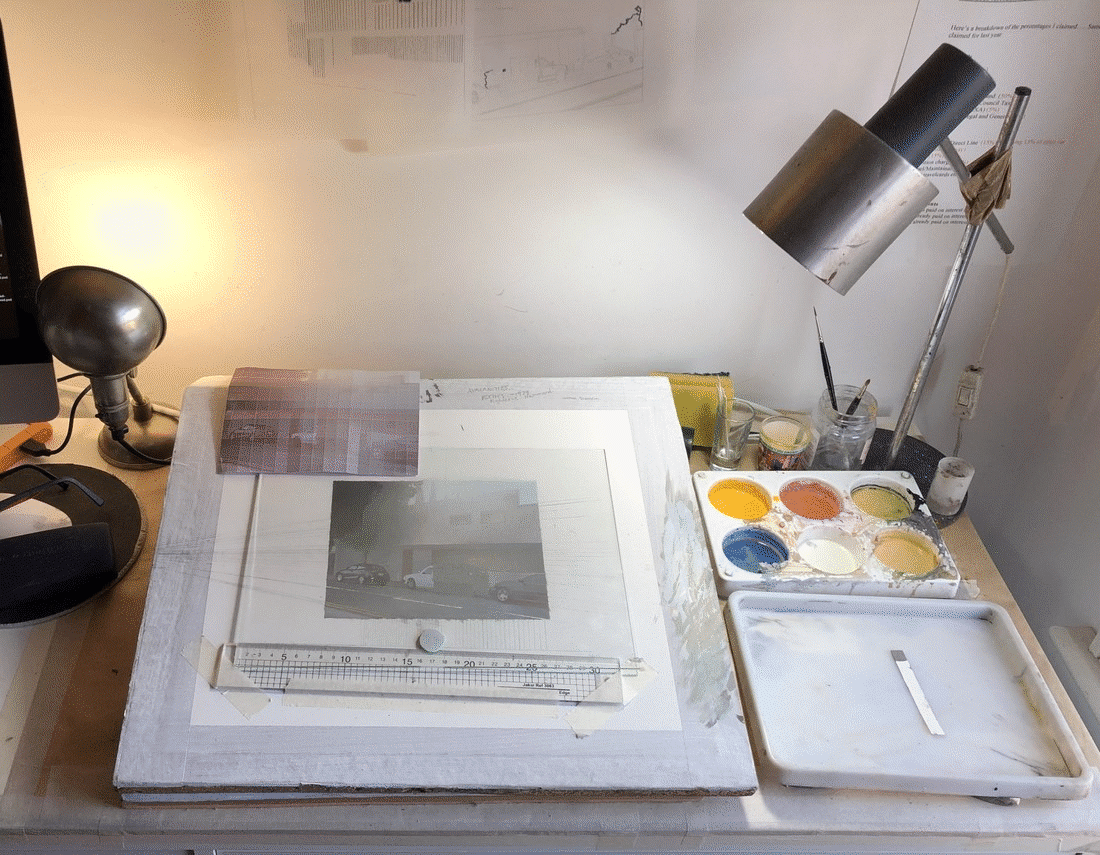 | Click the image to launch the Online Viewing Room
| |
|
Andrew Grassie and Manuel Miseur - exhibition tour
|
|
Before the exhibition opened, Andrew Grassie and Manuel Miseur toured the space, spoke about the artist's paintings and how the 24 works in Still Frame came together. CLICK HERE TO WATCH
|
|
|
Thomas Demand - M Leuven, German Public Radio, and DOMUS
|
|
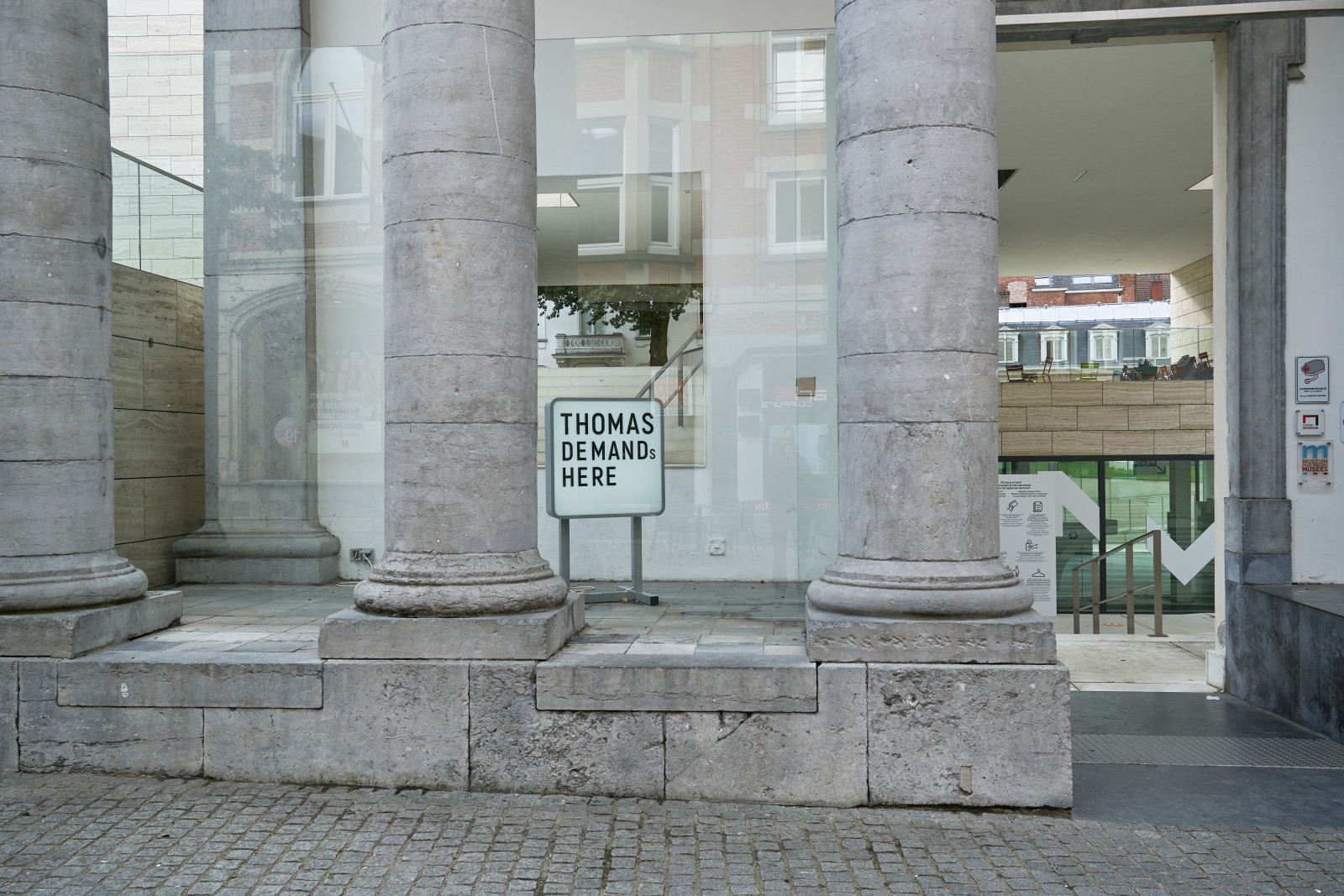 | Exterior view: Thomas Demand, HOUSE OF CARD, M Leuven, 2020 with a work by Rirkrit Tiravanija in center.
| |
|
 | Exhibition view: Thomas Demand, HOUSE OF CARD, M Leuven, 2020
| |
|
House of Card offers an overview of various approaches to construction in Thomas Demand’s oeuvre from the past fifteen years. His works in reference to models, scenography and even buildings are closely related to architecture. At the same time House of Card shows the connection between Demand’s projects and those of other influential artists, architects and designers like Martin Boyce, Arno Brandlhuber, Caruso St John, and Rirkrit Tiravanija.
The title House of Card refers to the precariousness of Demand's practice as a builder. Whereas architecture generally equates with permanence, Demand prefers to explore the limits of the ephemeral, as is evidenced in his use of paper and cardboard.
M Leuven is temporarily closed to the public in the context of the measures to slow down the further spread of the coronavirus.
House of Card is scheduled to run through April 19, 2021.
|
|
|
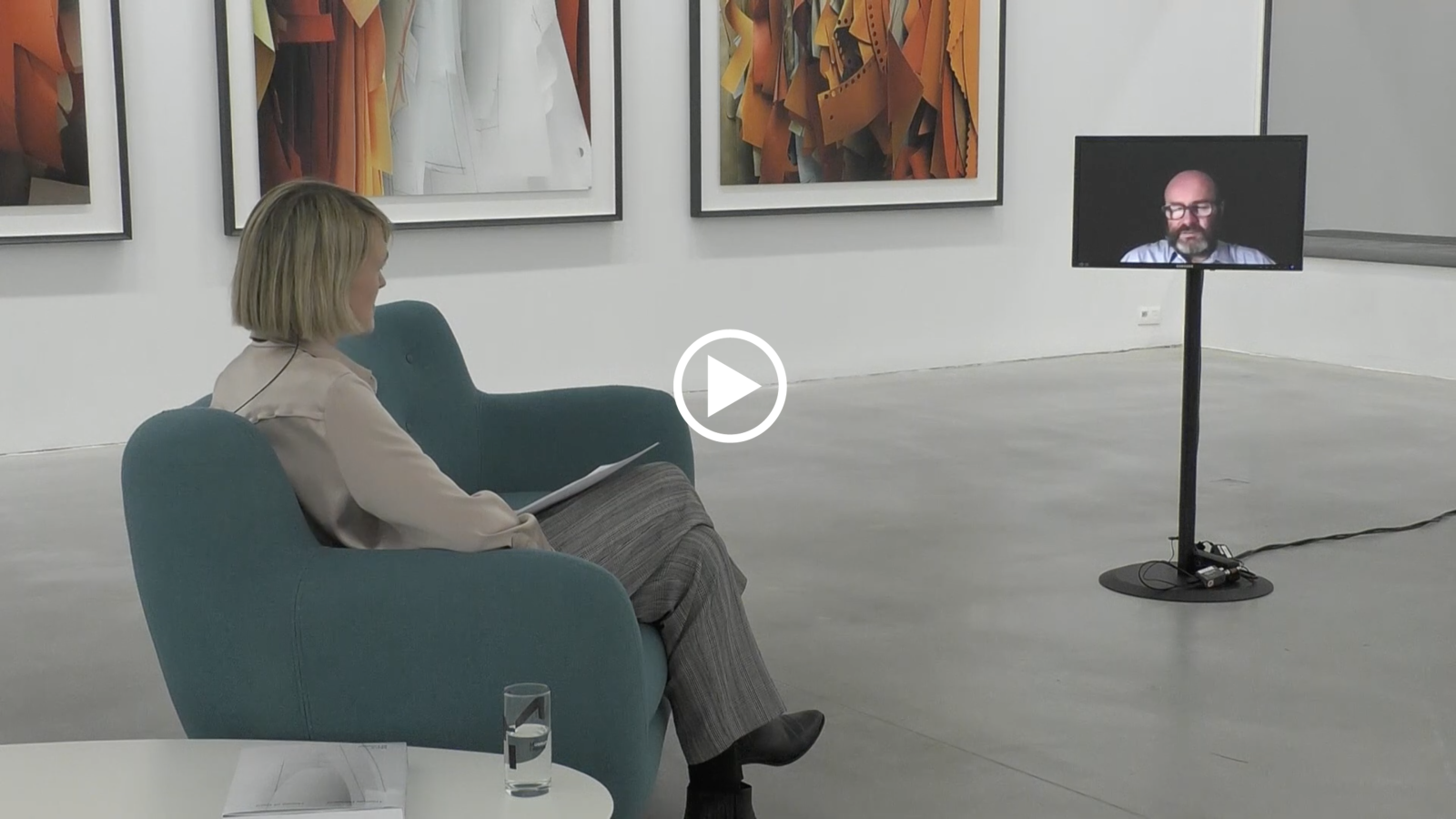
| Click the image to watch the full artist talk | |
|
For me [models] are a beautiful way of building our impression of the world. In other words, the memory. The models I am building of things ... are depicting what we remember instead of what it really was and that is basically the core of my work.
- Thomas Demand
As part of the online opening on October 8, 2020, M Leuven produced a circa 45 minutes video that includes a short introduction by Thomas Demand to his practice - from which the above quote is taken - followed by a conversation with the exhibition’s curator Valerie Verhack about the concept for House of Card.
|
|
|

| Click the image to listen to the interview
Photo © Brigitte Lacombe | |
|
On occasion of the presidential election in the United States, on November 3, 2020 German Public Radio broadcast an interview with Thomas Demand. The artist, who lived in Los Angeles for extended periods, speaks about American politics, the response of artists to the Trump presidency, and how the country may recover from years of polarization in the future. CLICK HERE TO LISTEN
|
|
|
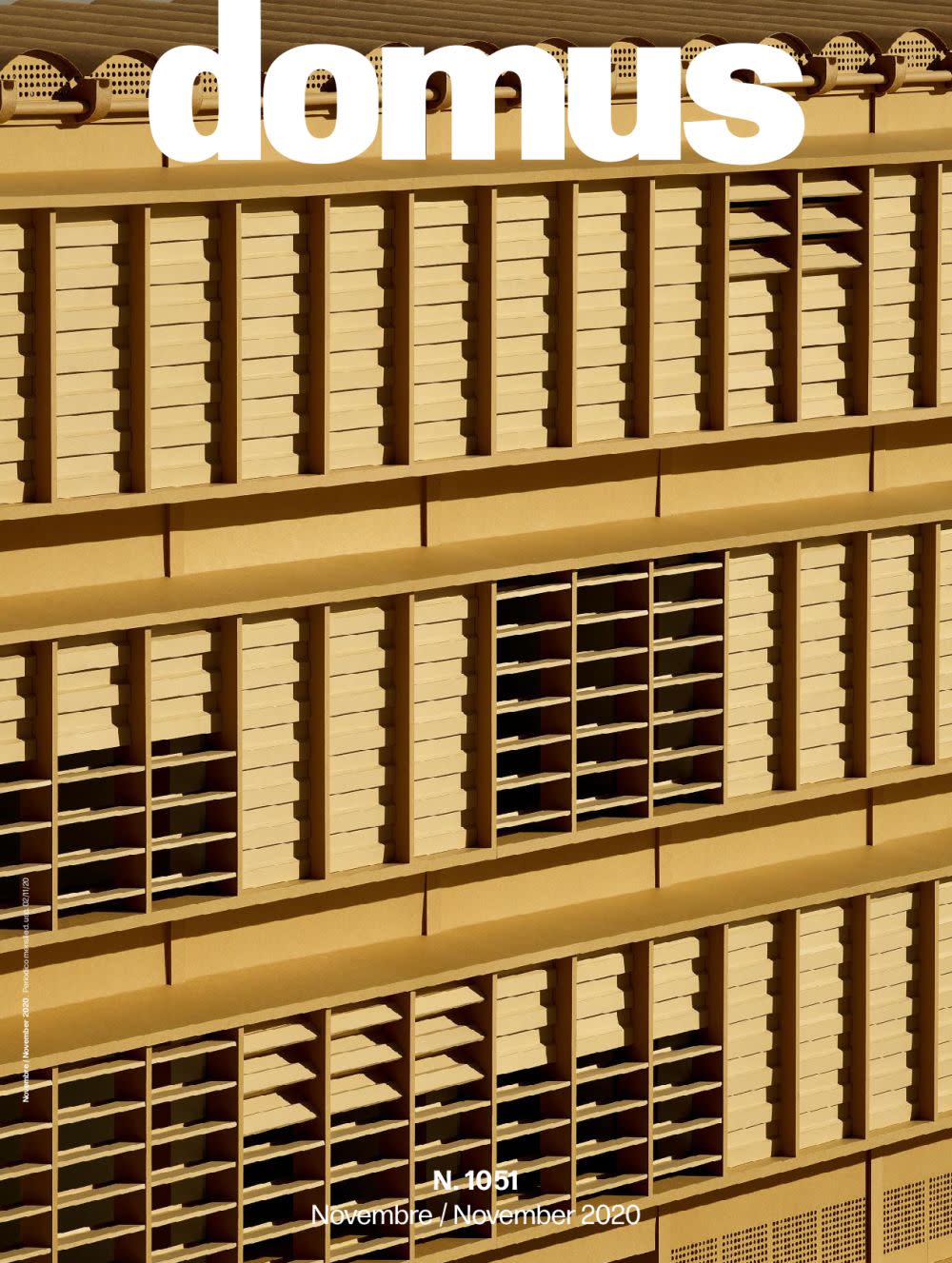 | DOMUS NOVEMBER | |
|
Concluding Thomas Demand’s yearlong collaboration with David Chipperfield who has been DOMUS Magazine’s guest editor in 2020, the cover of the magazine’s November issue shows the Golconde Dormitory in Pondicherry, India. Part of the Sri Aurobindo Ashram, established in 1926 by the philosopher and guru Sri Aurobindo (1872-1950) with the French artist and occultist Mirra Alfassa, the building, which dates to 1945, was designed by Antonin Raymond and its construction largely overseen by George Nakashima. Its façade consists of sets of louvers opening the spaces fully to the gardens.
The series of covers for DOMUS produced in 2020 depicts Architecture which got into trouble, as Demand puts it. These are designs which became symbolic architectural forms for current disputes without necessarily being built with any such intention.
The Italian magazine Domus has long been a major force of architectural publishing. Founded by Gio Ponti in 1928, the magazine began planning for its 100 years anniversary already two years ago with an ambitious program of a decade of yearly guest editors. In 2020 the British architect David Chipperfield took on this function. Known in Berlin for his thoughtful reconstruction of the Neues Museum (1993-2009) and the more recent completion of the James-Simon-Galerie (1999-2018), Chipperfield collaborated with Thomas Demand who made the magazine’s 10 covers this year.
|
|
|
Live Hack - Realty-V - through November 15
|
|
VILLEGGIATURA
After more than 30 hacks, among them the Copenhagen Architecture Festival and Esther Schipper, now KW Institute for Contemporary Art has been invaded by the polite hackers of realty-v. The collaborative project space-time.tv which Christopher Roth, its self-described “broadcast operator and concierge” presented in the gallery’s bookstore space in 2019, has been operating four online tv channels with largely self-generated content and found footage since 2018.
From November 5th on realty-v takes over the KW website. The friendly hack broadcasted live from the conference November 7-8, with additional background content, backstage footage and material pertaining to the histories, aesthetics and politics of modern-day land grabs.
After November 8, realty-v will provide you on this friendly hack with excerpts, summaries and statements from the conference participants.
The hack continues through November 15, 2020. |
|
|
Press - AA Bronson - Hyperallergic
|
|
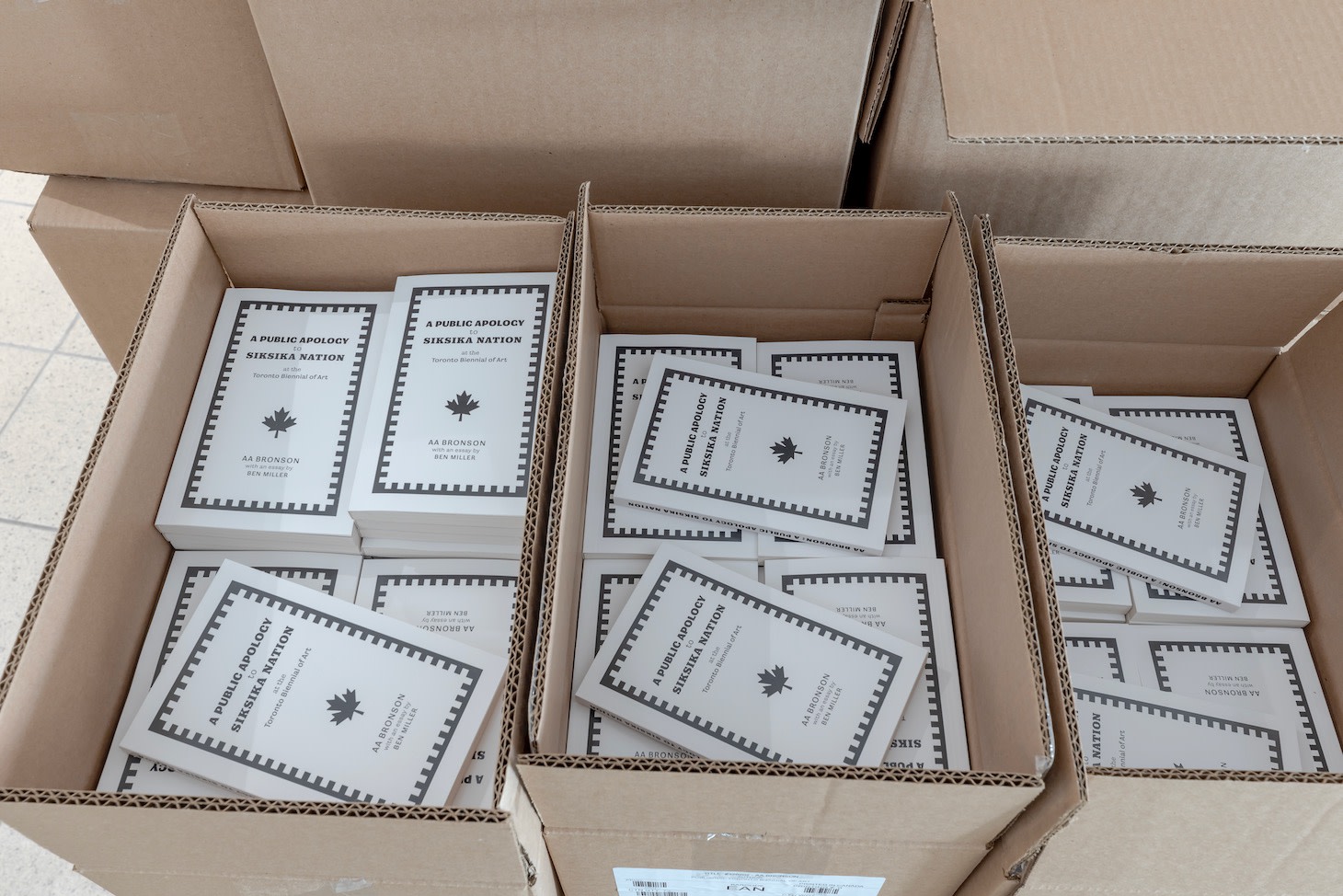 | A Public Apology to Siksika Nation, by AA Bronson with an essay by Ben Miller, a publication accompanying the performance of the same name at the Toronto Biennial 2019, produced especially for the occasion (photo by AA Bronson) | |
|
Under the title Can You Apologize to an Entire Indigenous Nation?, architect and design historian Andrea Rose Lacalamita published a comprehensive discussion of AA Bronson’s ongoing project A Public Apology to Siksika Nation in the Brooklyn-based arts publication Hyperallergic.Initially presented at the 2019 Toronto Biennial of Art, A Public Apology to Siksika Nation, includes an exhibition, performative components and a publication. It responds to European genocide, including AA Bronson's great-grandfather’s role as the first missionary at Siksika Nation and founder of the Old Sun residential school. (Old Sun, an influential Siksika leader, is an ancestor of Bronson’s collaborator, Adrian Stimson.) Generated from ongoing dialogue with Stimson and extensive research into museum and family archives, Bronson’s project makes actionable the responsibility of settlers in the era of reconciliation. Carefully considering the highly-charged politics of any public apology, Andrea Lacalamita concludes her text with a genuine appreciation of AA Bronsons approach: This brings us to an important realization. Bronson’s 'public' apology perhaps finds its greatest success in private, in the personal connections he has made and relationships he has built one-to-one. Intentionally or not, Bronson has created a new model for apology that empowers individuals to take apology into their own hands, instead of waiting for politicians or policing bodies like the RCMP to make things right. This is an important idea to grasp — and to mirror — if we want apologies to contribute to systemic change.Read the entire article HERE.
|
|
|
 | AA Bronson and Adrian Stimson looking at the Old Sun Residential School, now the Old Sun Community College, on the Siksika Reserve, Alberta, Canada, 2018
Photo © Ben Miller | |
|
Press - Gabriel Kuri - L'Officiel Art Belgium
|
|
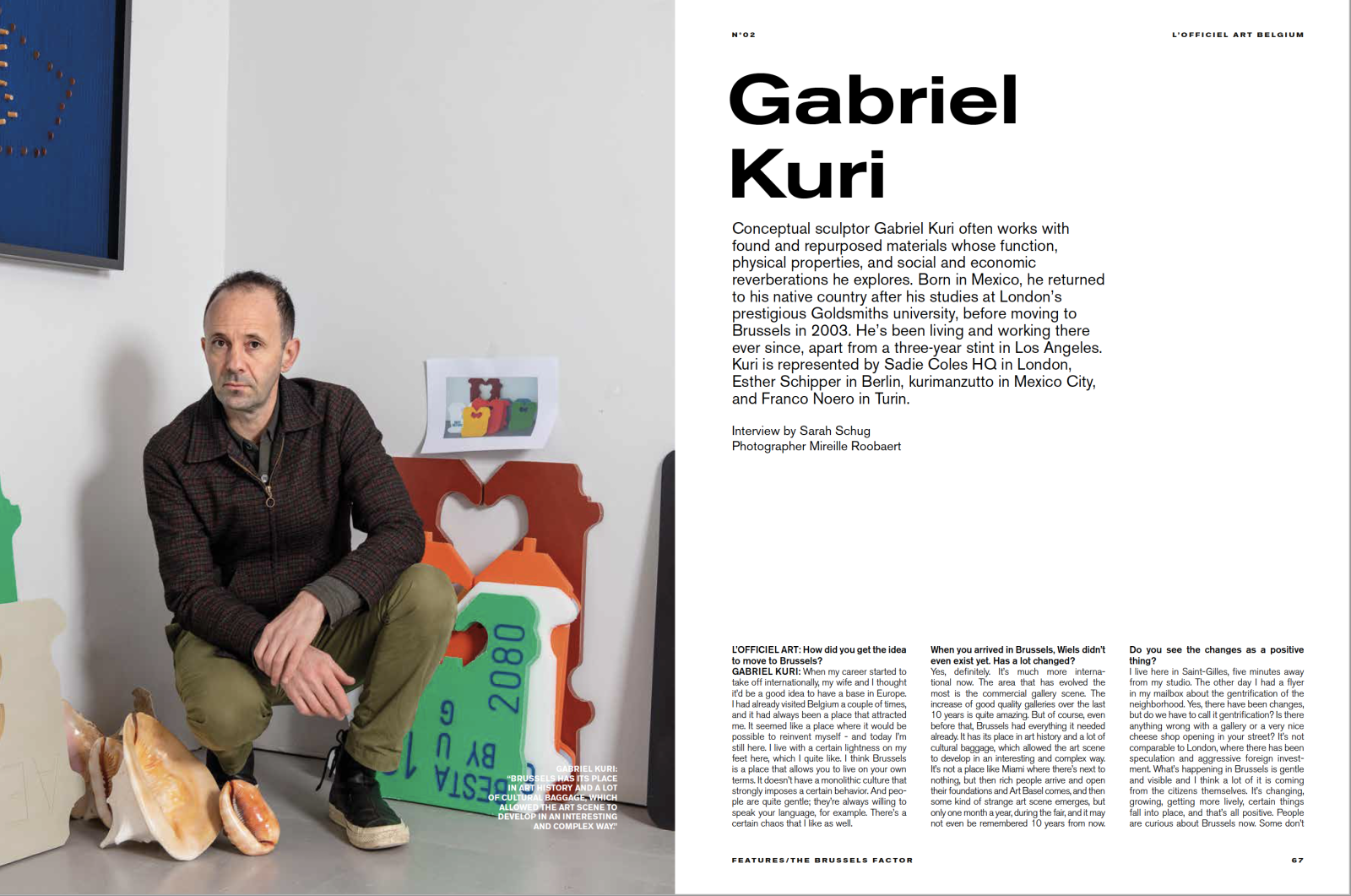
| Click the image to read the full article! | |
|
For L'Officiel Art Belgium, Gabriel Kuri spoke with Sarah Schug about living in Brussels and how life and art in the Belgian capital has changed over the years. Excerpt:Do you see the changes [in the city] as a positive thing?I live here in Saint-Gilles, five minutes away from my studio. The other day I had a flyer in my mailbox about the gentrification of the neighborhood. Yes, there have been changes, but do we have to call it gentrification? Is there anything wrong with a gallery or a very nice cheese shop opening in your street? It’s not comparable to London, where there has been speculation and aggressive foreign investment. What’s happening in Brussels is gentle and visible and I think a lot of it is coming from the citizens themselves. It’s changing, growing, getting more lively, certain things fall into place, and that’s all positive.
CLICK the above image to read the interview which appeared in the November issue of L'Officiel Art Belgium, Interview by Sarah Schug, Photographer Mireille Roobaert L'Officiel Belgium
|
|
|
West Bund Art Fair Online Conversation |
|

| Click the image to watch the full talk! | |
|
West Bund Art Fair Online Conversation on the topic of Art Across Boundaries : How the art world continues to operate internationally despite all the restrictions? with
Esther Schipper, Timothy Taylor, and Boris Vervoordt. Moderated by Mark Rappolt |
|
|
Exhibitions - A selection of exhibitions by our artists in Taiwan
|
|
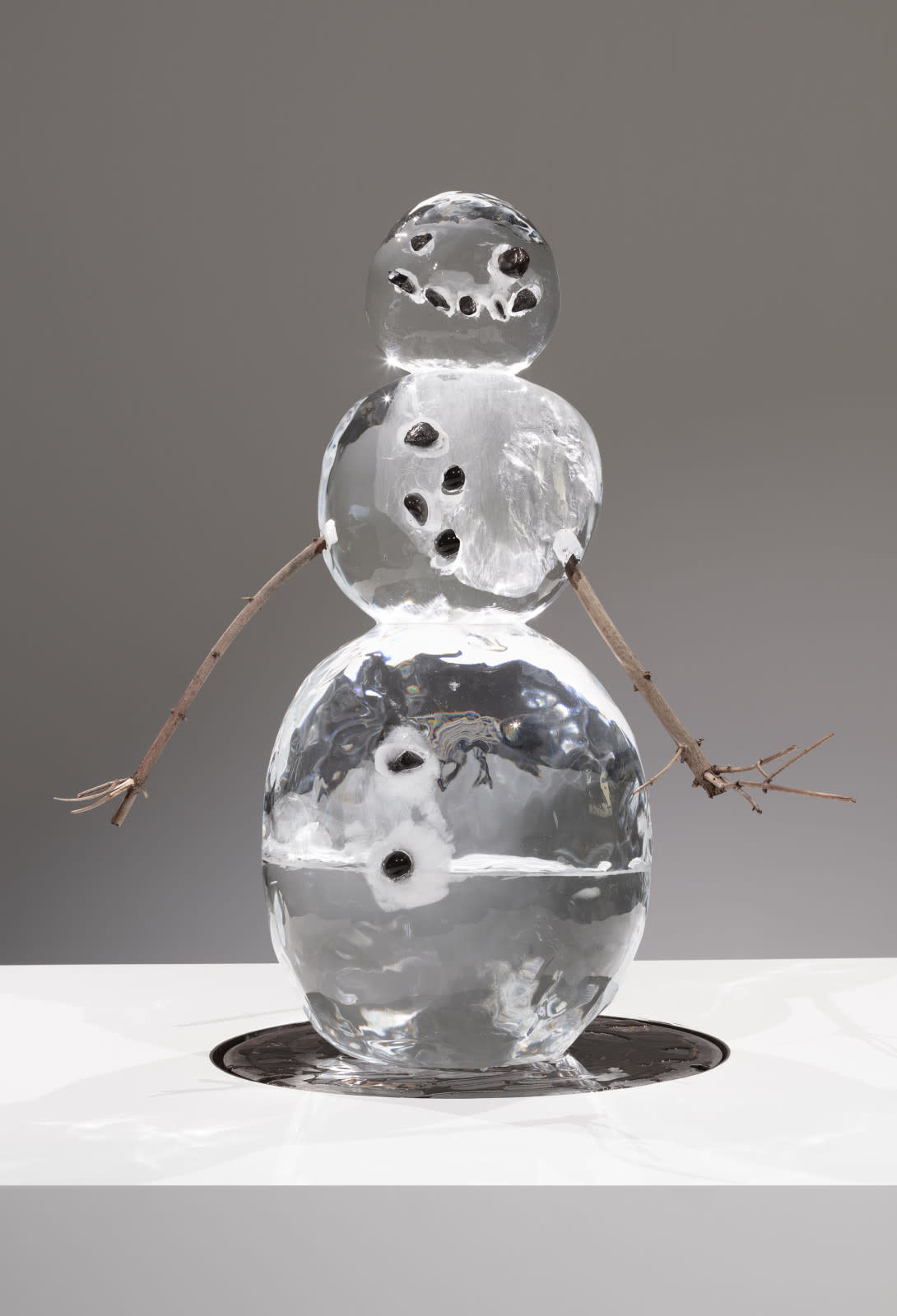 | Philippe Parreno, Iceman in Reality Park, 1995–2019, sculpted ice, stones, wooden sticks, wooden plinth with found Japanese metal manhole cover, sound installation, dimensions variable
Exhibition view: Philippe Parreno, Manifestations, Esther Schipper, Berlin, 2020
Photo © Andrea Rossetti | |
|
Philippe ParrenoWinsing Art Place No. 10, Lane 180 Section 6 Minquan East Road, Neihu District Taipei, 114 Through January 31, 2021 www.winsingartplace.com
|
|
|
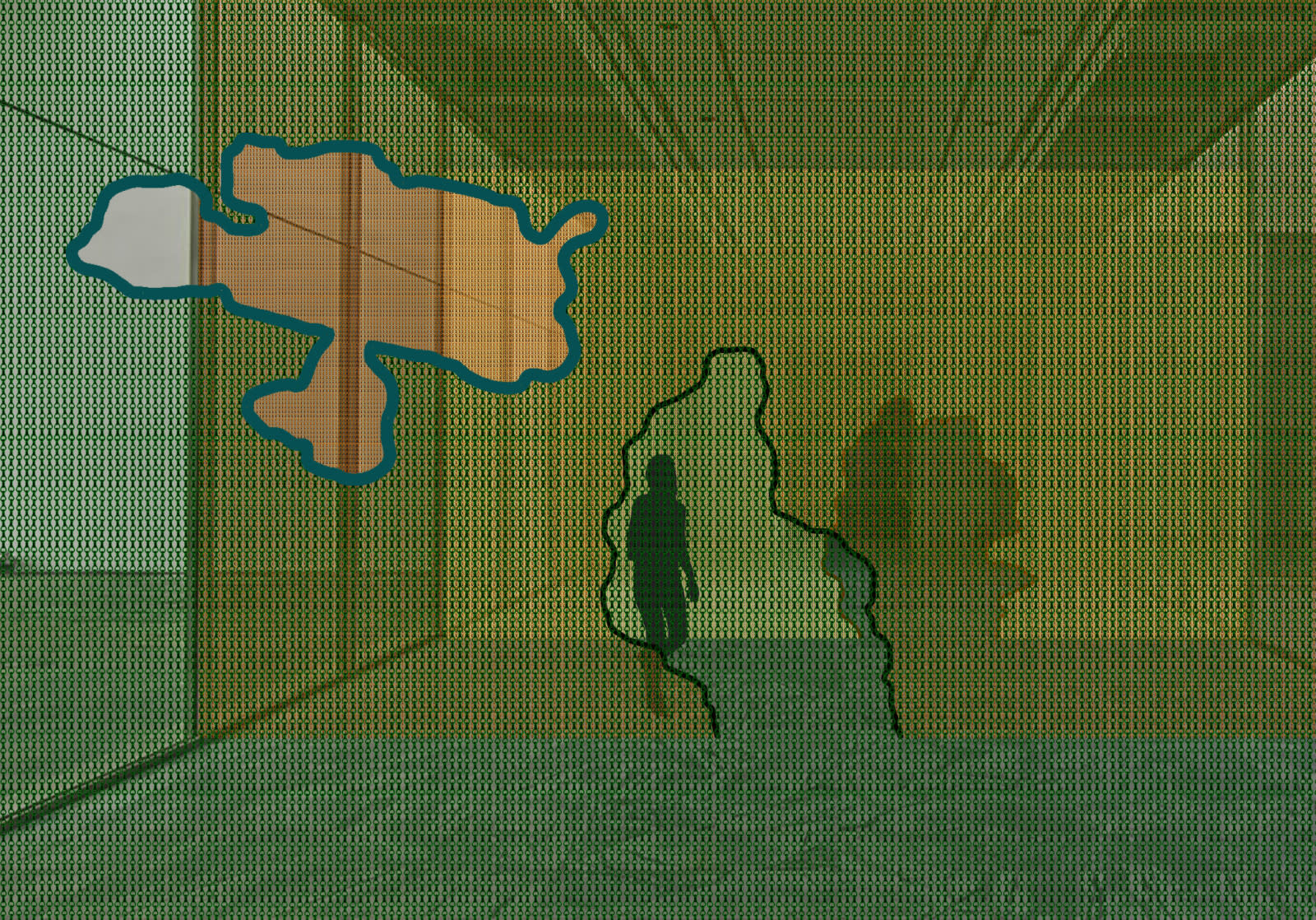 | Daniel Steegmann Mangrané, ⧜, 2020, kriska aluminium curtain, aluminium rail, powder-coated steel frames, as installed in Taipei Biennial 2020: 450 x 1455 x 780 cm
Image © Daniel Steegmann Mangrané | |
|
Taipei Biennial 2020: You and I Don’t Live on the Same Planet with Pierre Huyghe and Daniel Steegmann MangranéTaipei Fine Arts Museum No. 181, Sec. 3 Zhongshan N. Rd., Zhongshan Dist. Taipei City 10461 November 21, 2020 – March 14, 2021 www.taipeibiennale.org
|
|
|
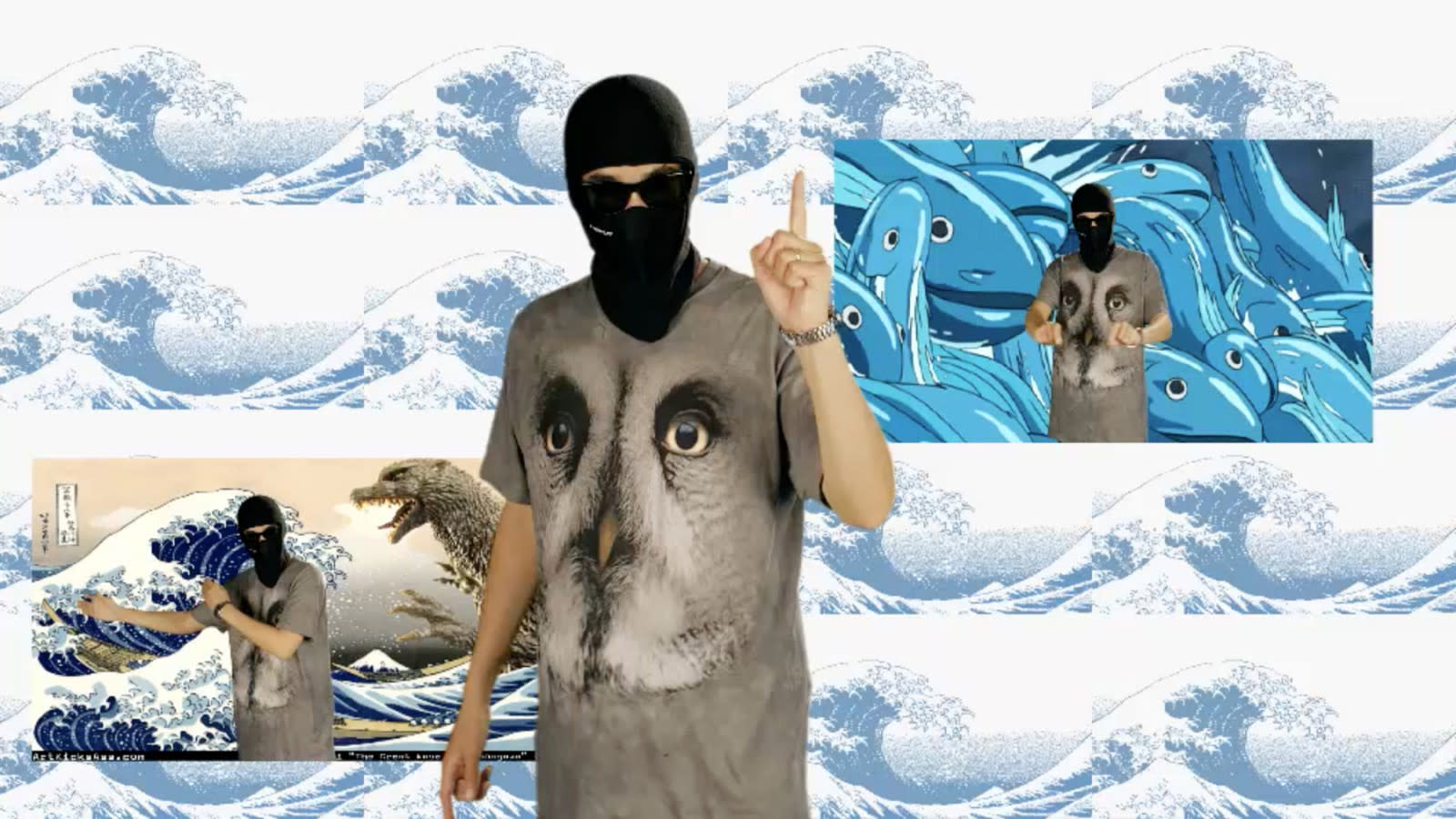 | Hito Steyerl, Liquidity Inc., 2014, HD video file, single channel in architectural environment, duration: 30 minutes, 15 seconds
© VG Bild-Kunst, Bonn, 2020
Film still © Hito Steyerl | |
|
Liquid Love with Hito SteyerlMoCA in collaboration with TheCube Project Space, Taipei NO.39 Chang-An West Road Taipei Taiwan 103 November 14, 2020 – January 24, 2021 www.mocataipei.org
|
|
|
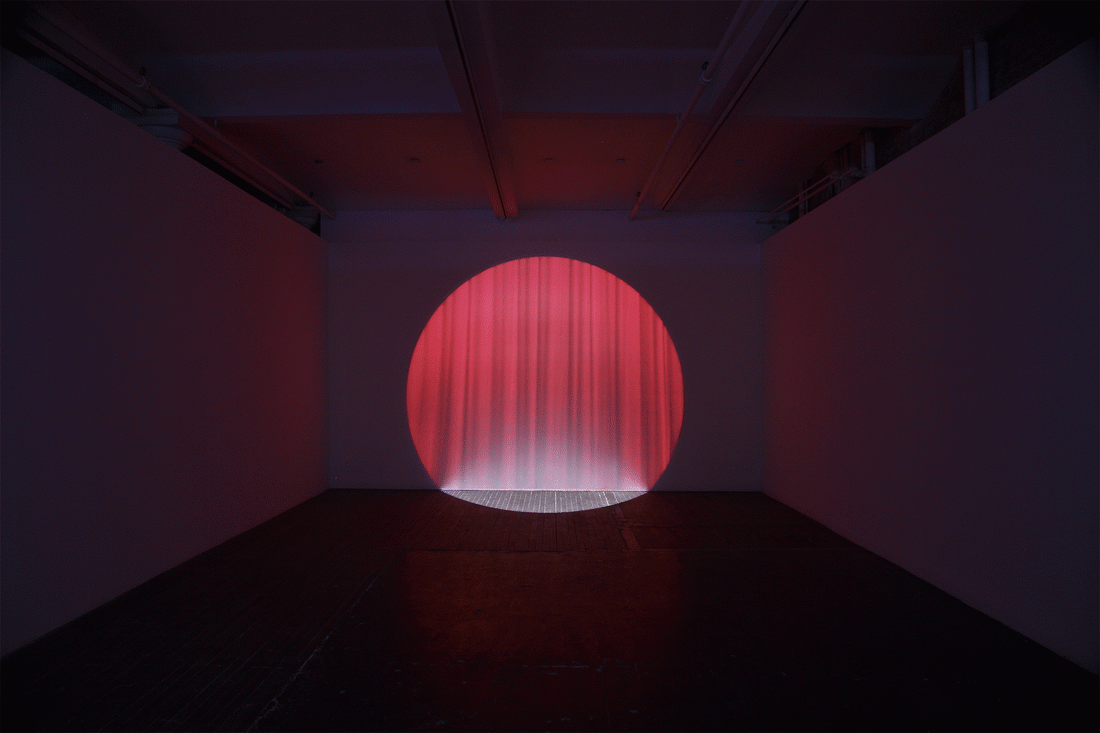 | Ceal Floyer, Double Act, 2006, photographic gobo, gobo holder, theater lamp, diameter: 300 cm. Exhibition view: Swiss Institute, New York, 2006. © VG Bild-Kunst, Bonn, 2020. Photo © Swiss Institute
Tao Hui, Double Talk, 2018, two-channel HD video (color, sound), duration: 23:44 min. Exhibition view: Anima, Taiwan International Video Art Exhibition (TIVA), 2020. Photo © Taiwan International Video Art Exhibition | |
|
ANIMAwith Ceal Floyer and Tao HuiTaiwan International Video Art Exhibition (TIVA) Various venues, Taipei Through January 17, 2021 www.twvideoart.org
|
|
|
Francesco Gennari
Drawings Visual Essay Self-portraits
Publisher: SKIRA
Language: Italian, English
Available here
|
|
|
Daniel Steegmann Mangrané
A Leaf-Shaped Animal Draws The Hand
Publisher: Skira
Language: Italian, English, French
Available here
|
|
|
|
|